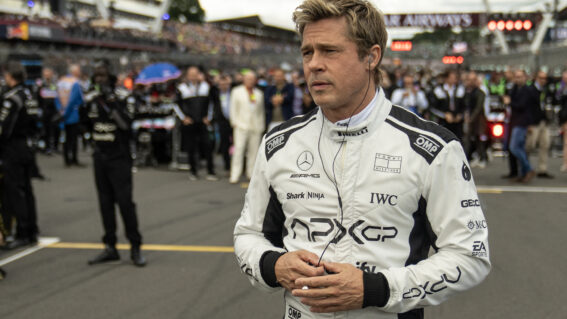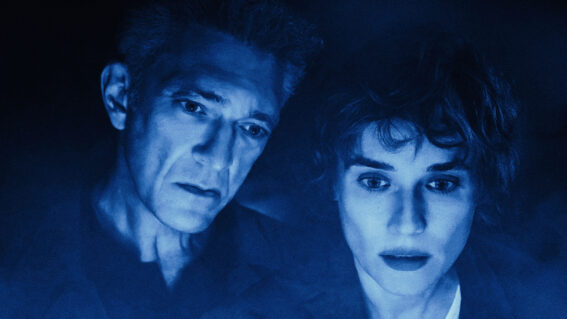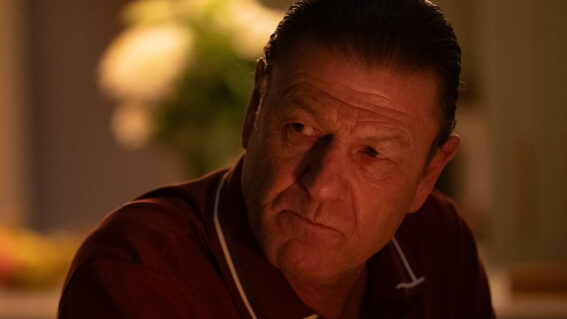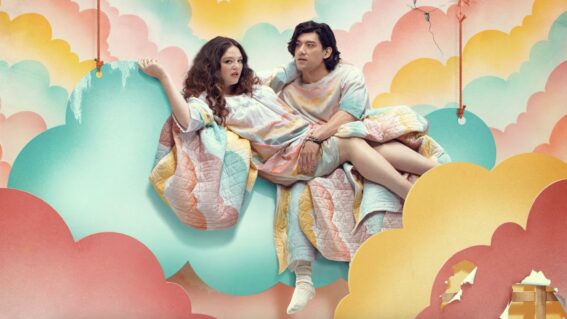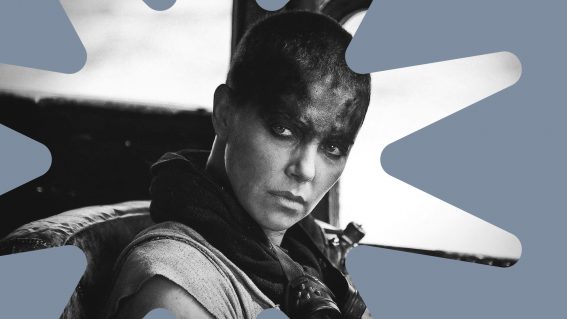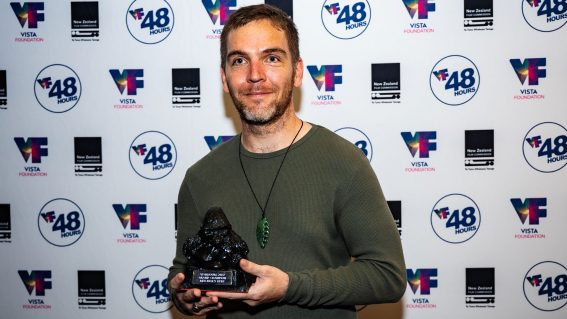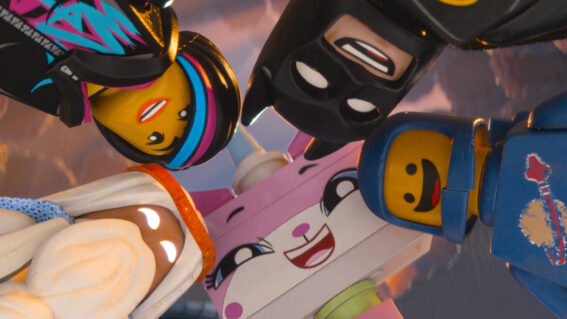The ‘Mao’s Last Dancer’ Interview, with Bruce Beresford
Flicks.co.nz caught up with veteran director Bruce Beresford while he was in Auckland, to talk about his latest film, Mao’s Last Dancer. Beresford has many films under his belt (including Driving Miss Daisy with Morgan Freeman, Tender Mercies with Robert Duvall, Paradise Road with Glenn Close and Double Jeopardy with Tommy Lee Jones), but his most recent effort still managed to throw new challenges […]
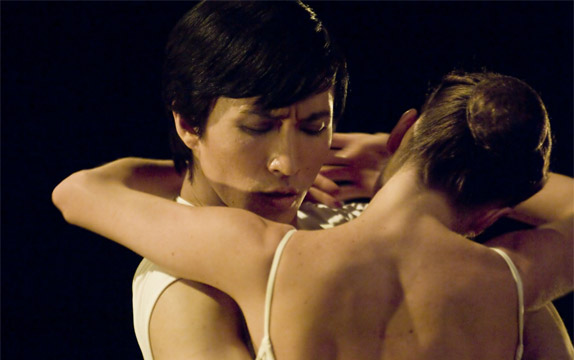
Flicks caught up with veteran director Bruce Beresford while he was in Auckland, to talk about his latest film, Mao’s Last Dancer. Beresford has many films under his belt (including Driving Miss Daisy with Morgan Freeman, Tender Mercies with Robert Duvall, Paradise Road with Glenn Close and Double Jeopardy with Tommy Lee Jones), but his most recent effort still managed to throw new challenges at him. Our first question was, of course..
FLICKS: What where the new challenges presented by making this film?
BRUCE: Well, I had to direct a huge number of actors. Almost the entire cast were non-professionals who were all ballet dancers. You couldn’t fake the ballet scene, so I said, “We got to get real ballet dancers”. Virtually all the dancers and all the teachers were all real ballet dancers and teachers.
And, of course, they’ve got to be good because you’re up against people like Bruce Greenwood and Kyle McLaughlin who are very polished actors. That was a big job. And then the dance stuff was all very complicated.
And the actors can’t dance forever, you know? They get completely exhausted after a while and you can’t do another take because they’re buggered. So we had to be very careful how we did it.
With those dance scenes, I noticed your approach was to take the audience’s perspective?
Yep. Well I looked at a lot of ballet films on DVD and I realised that they looked better filmed with the dancers head to toe. If you cut too much it never look right to me, so I did it fairly straightforward and I looked at people like Fred Astaire who did all the dances in one shot, just with the camera panning with it. It looked fantastic.
Did you have to study up on ballet a bit?
Yes! Because I didn’t know anything about it at all.
But you have had some experience with directing operas and plenty of stage productions?
Well, when you’re directing a stage production, the audience is watching from a fixed viewpoint so they’re seeing the whole thing in a wide shot. So you’ve got to work it out so it’s dramatically effective in a wide shot. And you have to pay a lot of attention to the lighting, the set and the grouping of the actors. Because other things are out the window: you can’t cut, you can’t move the audience closer, you can’t do tracking shots, you can’t re-take bits. It’s a different discipline really. I love doing operas though.
So when you’re making a film, do you shoot a lot of coverage?
No, I don’t think I do. I’ve never been on a set with another director so I don’t know what they do. But I storyboard all the sequences. So I always look at the scenes in the script and then I say to myself: “What is the scene trying to tell and who are the important characters and what are the important beats in it?” Then I’ll storyboard the sequence, always keeping in mind where it goes in the overall film. Because I’ve found quite often, if you try and do sequences just for themselves, you run the risk of making a series of short films rather than a feature film, because really the scenes only work when they’re in the context of the whole movie.
It’s an easy mistake to make each one work for itself. I had a friend in England who did this once. Each scene was great in itself and this was an Australian called Don Levy, brilliant guy, but he made this film called Herostratus which I’m sure you’ve never have heard of, it’s about two and a half hours long and he was editing it in my cutting room for a long time.
He used to show me little bits of it and it was always great, it was fantastic. Then when the film was finished and I went to the screening it was a complete disaster because the little bits were good but the movie did not add up to anything, and the little bits kind of annihilated one and other.
I guess you must have thought about that on this film – skipping between many different time periods and places. That must have been a challenge.
Well I think it was more interesting to the tell the story that way because doing it in flashbacks meant you could counterpoint America, China, America, China and contrast the styles of life. Whereas, if you had told it chronologically you wouldn’t have got that – you would have had all in China and then you would have it all in America and I don’t think it would have been as dramatically effective.
Did you approach the China-set scenes in a different way?
Yes we filmed them a different way. The cameraman came up with this idea. I said to him, “You’ve got to make it somehow look different, so you don’t just go from China to America and have it look the same.” He came up with this idea, he said: “Well what we’ll do is we’ll take the Chinese scenes and we’ll put a mask in the camera and film it like that and then blow it up. It’s the quality of film and no-one will be able to quite say what it is.” He said, “But it will look different, so it will reinforce the feeling that you’re in a different place.” It’s a subtle thing and in fact it works very well because when you go back and forth, the patina of the image is different and so it reinforces the feeling that it’s a different culture.
So you’re Australian and I presume that’s why you filmed most of it in Australia, is that right?
Yes, I think we had to. It was actually probably cheaper for us. We had a second unit and I went with them to some stuff in Houston. But we only filmed a few exteriors there. See, once you’re inside a ballet rehearsal room or a ballet theatre, it doesn’t make much difference where you are.
That’s true.
And in fact, we found the ballet rehearsal rooms were almost exactly the same everywhere. The ones in China were the same. We filmed some exteriors in Houston of the city in the theatres. The outdoor theatre was in Houston. And then what we did was, in the wide shot we filmed the stage in Sydney and CGI’d it onto the theatre in Houston. And we made the audiences bigger with CGI. It’s amazing how many shots you end up with in CGI – there were quite a few.
As a director, do you feel comfortable just going to a foreign country and being in charge?
Well, it’s always important to sort of get some feeling of the country – the way the country is – so that you try and put a fairly accurate picture of it onscreen. I mean, it’s quite easy to turn up and then create some sort of travesty of it. You get a lot of those films – I’ve seen American films done by European directors or Australians for that matter where you really feel there’s something kind of dislocated about it, there’s something not quite right.
Because they really don’t understand the country or else they’re contemptuous of it or they have a vision of it that is at odds with the way it really is. And you get a strange sort of feeling.
It’s amazing how many people have said to me: “Your Driving Miss Daisy”, they said, “you would never believe it was directed by someone who wasn’t American.” Because I think I got the atmosphere right. China too was tricky, so I was glad to get there quite a while before we started shooting so you could get a real feeling for the place.
Finding the Chinese village was difficult. We couldn’t find one of those villages anywhere because they had all been demolished and everyone had been re-housed in apartment blocks. And then I actually came back to Australia and we hadn’t found the village and we were talking about building one somewhere, when I suddenly got a call from the Chinese art director and he said, “I think I have found one.”
I had flu, I was in terrible shape, but I went straight back and went out to where he was, about 100 miles out of Beijing, and that village was still there and it hadn’t been demolished because the local farmers were using the houses to store hay. But it was real. So we were able to use it – we did a deal with all the farmers, did the houses up a bit, fixed the roofs and we were able to film it.
Did you have to be sensitive to the Chinese and not just portray them as the bad guys and the evil guys?
Well, I tried to make them all human. I mean, even the guy who was the military guy who was the one who was always telling them, “You can’t do this, you can’t do that,” I didn’t really demonise him. You know, because Lee said to me, they were not really like that he said they were kind of party people. He said they weren’t that heavy going. And he said they were, you know, fanatical communists. He said, you know, they didn’t treat us that badly really. He said, you know, it would be better not to make it look like it was a sort of total nightmare which I think the Chinese actually come out of it quite well.
Yes. So was Li Cunxin very involved with the project?
I went through it enormously carefully with him before we started. I went to his house in Melbourne, (oh, a beautiful house), and I stayed with him and we went through the script, absolutely line by line, so I could ask him questions. How did you do this, how did you do that and where was this, where was that? So I was able to ask him things like “When you were in the village and you all had dinner, where did you eat because there’s no room in that house?” And he said, “Oh, we sat in a circle on the bed.”
And the fields, you know, “Where were the fields in relation to the house, where was the school in relation to the house, how did you get to the school, how many kids are in the school, how many teachers were in the school?” And he’d tell me things that I would then add to it.
Let me ask you about acting. Quite a lot of your films have had quite good performances from the actors. I think a few have had Oscar nominations. What’s your approach to directing actors?
I don’t know that I have any particular approach. I think part of the trick of those good performances is casting the right people in the roles. If you make a mistake with the casting, it’s often very difficult. And if you cast the right ones it seems to sail through much easier.
So do you think the characters are already there in the script or do you believe in method acting?
I think they often are but I think one of the things that makes roles work on screen is how you photograph them. You can have a great performance that you don’t actually photograph and I’ve seen that happen, when people give tremendous performances but it’s filmed either a little too wide or a little too close and so the emphasis is wrong. It’s a very subtle thing.
I remember when I was doing Tender Mercies, Bob Duvall did a fantastic scene and he said, “How was that?” And I said, “Great, but it’s not in the film.” He said, “What do you mean it’s not in the film, I just did it”. I said, “You did it, Bob, but the camera is here, you’re there, you played it the other way, you didn’t play it towards the camera.” And he said, “Oh, that’s cheating”. And I said, “Why is it cheating, we’re making a film. If you play it away from the camera, or two thirds of the way from the camera, we actually haven’t got it”. I said, “It’s a great performance but we haven’t filmed it.”
But these lead actors are first-timers, so–
–Yes. In a way that’s easier because then you just say, “Do exactly what I say and it’s gonna work” and they’ll do it.







